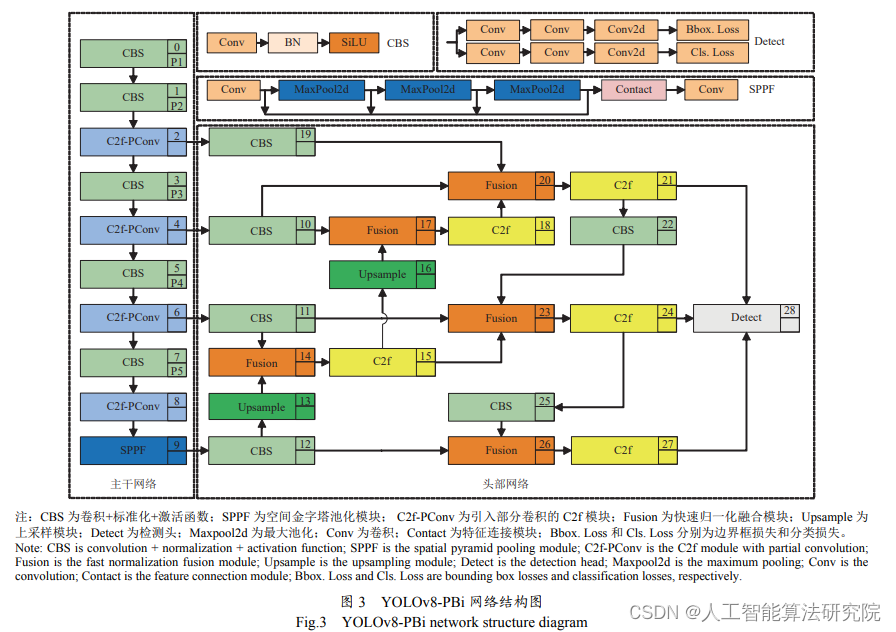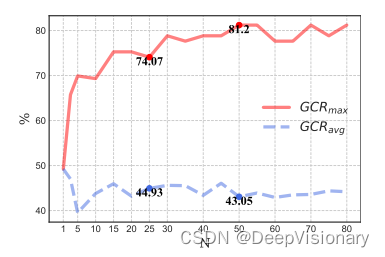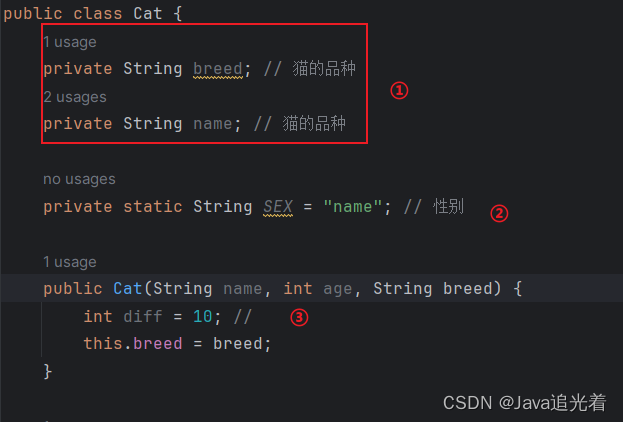C#中,所有数组都自动继承于System.Array这个抽象类,数组都为引用类型,
所有对数组的更新都会导致源数组的元素值的篡改。
而所有集合的根都来自可枚举接口IEnumerable
数组有三种样式:
数组的Rank(秩)属性代表数组的维数
一维数组【Rank为1】:
T[] array;锯齿数组【Rank为1】:
锯齿数组本质仍属于一维数组,只不过数组的某一个元素都是数组:
T[][] array;多维数组【Rank为2~N,秩为逗号个数+1】:
二维,三维等多维数组,使用[,,..,]标识
T[,] array;数组实现了IList,ICollection等接口,因此数组是一种特殊的集合
所有集合的根都来自可枚举接口IEnumerable
using System.Runtime.InteropServices;
namespace System.Collections
{
[ComVisible(true)]
[Guid("496B0ABE-CDEE-11d3-88E8-00902754C43A")]
public interface IEnumerable
{
[DispId(-4)]
IEnumerator GetEnumerator();
}
}【数组一定是集合,集合不一定是数组】
public abstract class Array : ICloneable, IList, ICollection, IEnumerable, IStructuralComparable, IStructuralEquatable部分数组ArraySegment<T>:
一种结构,指代数组的一部分
ArraySegment<T>
public struct ArraySegment<T> : IList<T>, ICollection<T>, IEnumerable<T>, IEnumerable, IReadOnlyList<T>, IReadOnlyCollection<T>常见的集合统计:
列表:List<T>
列表:List<T> 继承于 IList<T>继承于ICollection<T>继承于IEnumerable<T>继承于IEnumerable
链表:LinkedList<T>
链表:LinkedList<T>继承于ICollection<T>继承于IEnumerable<T>继承于IEnumerable
字典:Dictionary<TKey, TValue>
字典:Dictionary<TKey, TValue>继承于IDictionary<TKey, TValue>继承于ICollection<KeyValuePair<TKey, TValue>>继承于IEnumerable<T>继承于IEnumerable
队列:Queue<T>
队列:Queue<T>继承于IEnumerable<T>继承于IEnumerable
栈:Stack<T>
栈:Stack<T>继承于IEnumerable<T>继承于IEnumerable
哈希集:HashSet<T>
哈希集:HashSet<T>继承于ISet<T>继承于ICollection<T>继承于IEnumerable<T>继承于IEnumerable
计算机中的集合与数学中的集合:
之前我们数学中定义的集合 集合中元素的三个特性:1、确定性、2、互异性、3、无序性。
在编程语言中,只有HashSet<T>继承于ISet<T> 满足,其他都不是数学中的集合,计算机中的集合是广义的概念,包含数组、队列、字典、列表等
测试程序:
using System;
using System.Collections.Generic;
using System.Linq;
using System.Text;
using System.Threading.Tasks;
namespace CollectionAndArrayDemo
{
class Program
{
static void Main(string[] args)
{
TestArray();
TestSegmentArray();
TestCollections();
Console.ReadLine();
}
/// <summary>
/// 一维数据、锯齿数组、二维数组
/// </summary>
static void TestArray()
{
int[] oneDimensionalArray = new int[3] { 6, 9, 7 };
Console.WriteLine(string.Join(",", oneDimensionalArray));
Console.WriteLine($"一维数组的维数(秩)为【{oneDimensionalArray.Rank}】");
int[][] sawtoothArray = new int[3][];
sawtoothArray[0] = new int[2] { 1, 2 };
sawtoothArray[1] = new int[3] { 1, 2, 3 };
sawtoothArray[2] = new int[1] { 1 };
Console.WriteLine(string.Join(".\n", sawtoothArray.Select(arr => string.Join(",", arr))));
Console.WriteLine($"锯齿数组的维数(秩)为【{sawtoothArray.Rank}】");
int[,] twoDimensionalArray = new int[3, 4] { { 1, 2, 3, 4 }, { 5, 6, 7, 8 }, { 9, 10, 11, 12 } };
for (int i = 0; i <= twoDimensionalArray.GetUpperBound(0); i++)
{
for (int j = 0; j <= twoDimensionalArray.GetUpperBound(1); j++)
{
Console.Write($"{twoDimensionalArray[i, j]},");
}
Console.WriteLine();
}
Console.WriteLine($"二维数组的维数(秩)为【{twoDimensionalArray.Rank}】");
int[,][] vs1 = new int[2, 3][];//定义一个二维数组,元素的每一个元素都是一个数组
vs1[0, 0] = new int[3] { 4, 5, 6 };
Console.WriteLine($"定义一个二维数组int[,][],元素的每一个元素都是一个数组.秩为【{vs1.Rank}】");
int[][,] vs2 = new int[3][,];//定义一个一维数组,元素的每一个元素都是一个二维数组
vs2[0] = new int[2, 3];
Console.WriteLine($"定义一个一维数组int[][,],元素的每一个元素都是一个二维数组.秩为【{vs2.Rank}】");
}
/// <summary>
/// 部分数组
/// </summary>
static void TestSegmentArray()
{
int[] srcArray = new int[6] { 6, 5, 4, 3, 2, 1 };
ArraySegment<int> segmentArray = new ArraySegment<int>(srcArray, 2, 3);
Console.WriteLine($"部分数组的元素个数【{segmentArray.Count}】");
Console.WriteLine(string.Join(",", segmentArray));
}
/// <summary>
/// 测试集合:列表、链表、字典、队列、栈
/// </summary>
static void TestCollections()
{
List<int> list = new List<int>() { 3, 6, 9 };
Console.WriteLine($"打印列表:{string.Join(",", list)}");
LinkedList<int> linkedList = new LinkedList<int>();
LinkedListNode<int> node = new LinkedListNode<int>(5);
linkedList.AddFirst(node);
linkedList.AddAfter(node, 8);
Console.WriteLine($"打印链表:{string.Join(",", linkedList)}");
Dictionary<string, int> dict = new Dictionary<string, int>() { { "月清疏", 18 }, { "修吾", 3000 } };
dict.Add("桑游", 19);
dict["白茉晴"] = 16;
Console.WriteLine($"打印字典:{string.Join(",", dict)}");
//哈希集 元素是唯一的
HashSet<int> hashSet = new HashSet<int>() { 20, 40 };
hashSet.Add(20);
hashSet.Add(30);
Console.WriteLine($"打印哈希集:{string.Join(",", hashSet)}");
//队列为先进先出
Queue<int> queue = new Queue<int>(new int[] { 20, 35 });
queue.Enqueue(29);
int dequeueElement = queue.Dequeue();
Console.WriteLine($"队列出列元素值:【{dequeueElement}】");
Console.WriteLine($"打印队列:{string.Join(",", queue)}");
//栈为后进先出
Stack<int> stack = new Stack<int>(new int[] { 20, 35 });
stack.Push(29);
int popElement = stack.Pop();
Console.WriteLine($"出栈元素值:【{popElement}】");
Console.WriteLine($"打印栈:{string.Join(",", stack)}");
}
}
}
程序运行如图:
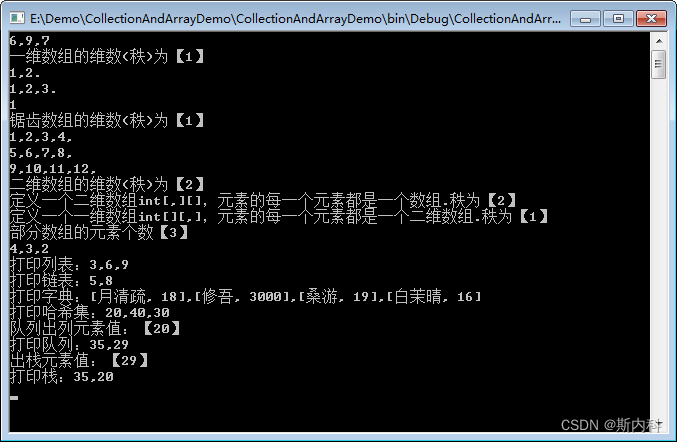



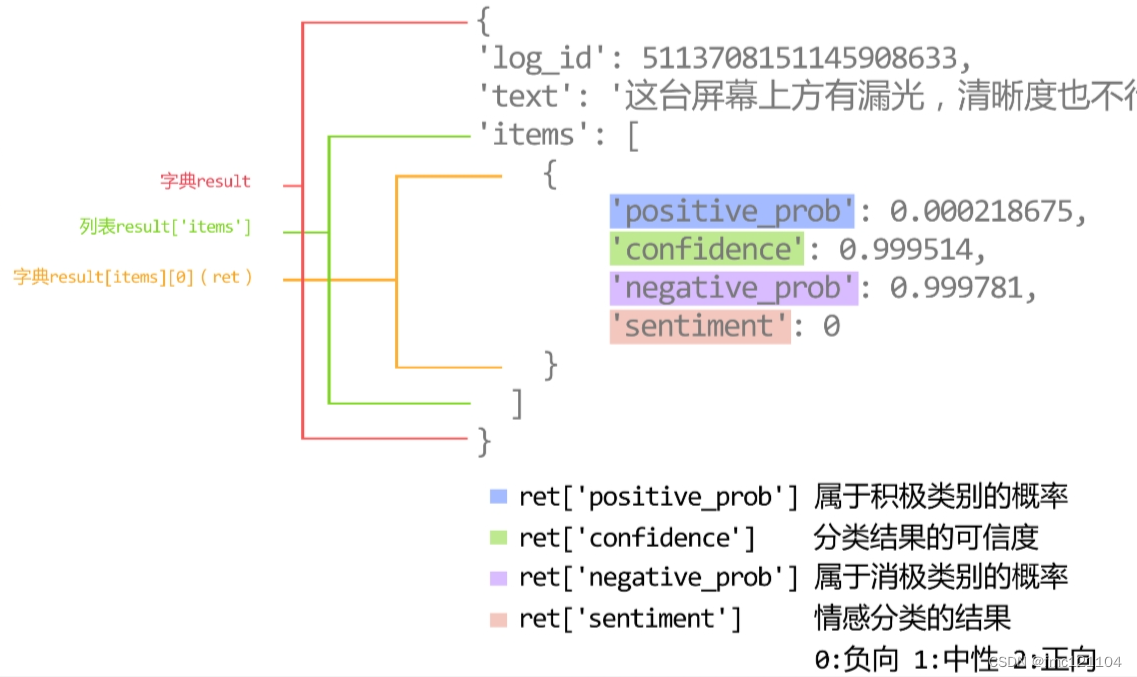


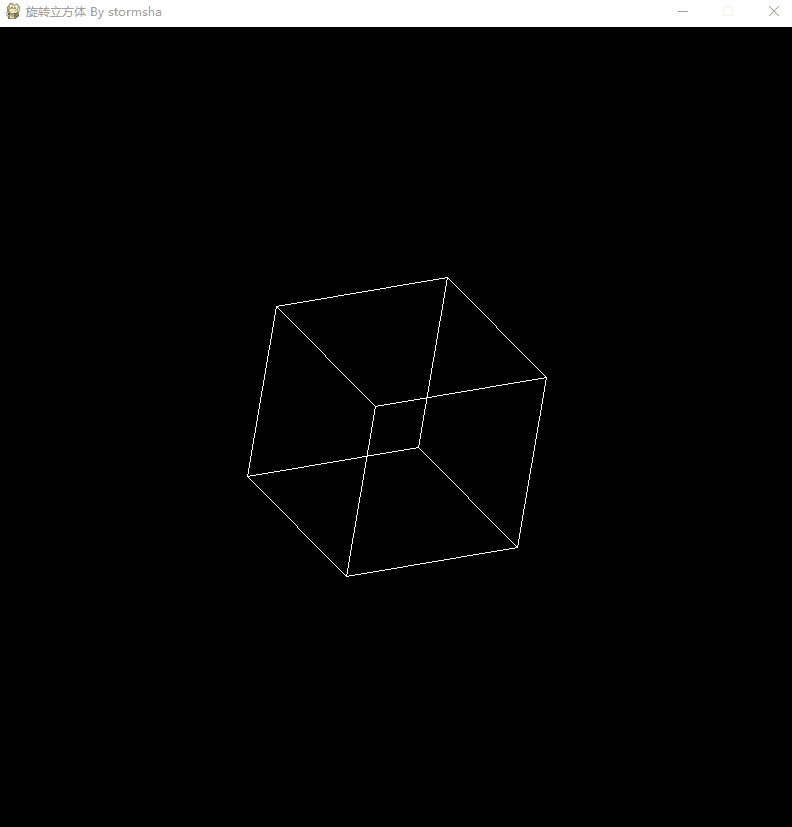



![[图解]实现领域驱动设计译文暴露的问题03](https://img-blog.csdnimg.cn/direct/bb8b6ece768c4893ad52362316014dcf.png)


